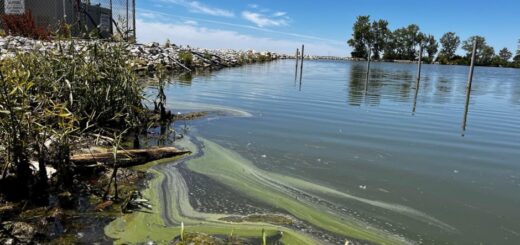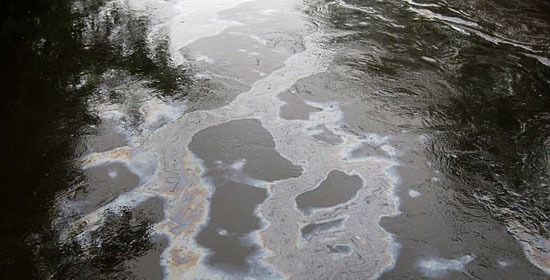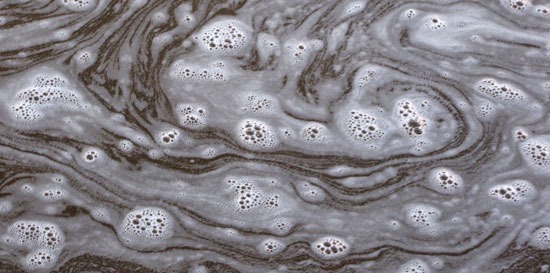EPA begins major BPA investigation
0 The Environmental Protection Agency announced Monday its plans to investigate bisphenol A (BPA) and whether it adversely affects the environment as well as human and animal health. The chemical, which is widely used in the manufacturing of food packaging and plastic bottles, will now be added to the EPA’s chemicals of concern list. The agency will conduct a BPA investigation regarding the concentration of the plastic substance in surface water, ground water, and drinking water to decide whether it exists in quantities high enough to merit action. The agency’s decision comes following a January announcement from the Food and Drug Administration in which it changed an earlier conclusion regarding the chemical’s safety. It had initially said in August 2008 that BPA was safe, but has now agreed there is reason for some concern based on recent studies. “We share FDA’s concern about the potential health impacts from BPA,” said Steve Owens, assistant administrator of EPA’s Office of Prevention, Pesticides, and Toxic Substances. “Both EPA and FDA, and many other agencies are moving forward to fully assess the environmental and health impacts to ensure that the full range of BPA’s possible impacts are examined.” In its January update, the FDA wrote:
The Environmental Protection Agency announced Monday its plans to investigate bisphenol A (BPA) and whether it adversely affects the environment as well as human and animal health. The chemical, which is widely used in the manufacturing of food packaging and plastic bottles, will now be added to the EPA’s chemicals of concern list. The agency will conduct a BPA investigation regarding the concentration of the plastic substance in surface water, ground water, and drinking water to decide whether it exists in quantities high enough to merit action. The agency’s decision comes following a January announcement from the Food and Drug Administration in which it changed an earlier conclusion regarding the chemical’s safety. It had initially said in August 2008 that BPA was safe, but has now agreed there is reason for some concern based on recent studies. “We share FDA’s concern about the potential health impacts from BPA,” said Steve Owens, assistant administrator of EPA’s Office of Prevention, Pesticides, and Toxic Substances. “Both EPA and FDA, and many other agencies are moving forward to fully assess the environmental and health impacts to ensure that the full range of BPA’s possible impacts are examined.” In its January update, the FDA wrote:
At this interim stage, FDA shares the perspective of the National Toxicology Program that recent studies provide reason for some concern about the potential effects of BPA on the brain, behavior, and prostate gland of fetuses, infants and children
Whereas the FDA has authority to regulate BPA-based food packaging, however, the EPA’s attention will be directed at how the release of large quantities of BPA affect the environment. BPA is introduced to the environment at a rate exceeding one million pounds per year, according to the EPA, and it has caused developmental effects in animal studies and might also interfere with the endocrine system. Some research even indicates BPA has shown up in the world’s oceans, possibly from epoxy plastic paint used to seal and protect ship hulls. According to the EPA, its BPA action plan includes the following:
- Adding BPA to the chemical concern list on the basis of potential environmental effects.
- Requiring information on concentrations of BPA in surface water, ground water, and drinking water to determine if BPA may be present at levels of potential concern.
- Requiring manufacturers to provide test data to assist the agency in evaluating its possible impacts, including long-term effects on growth, reproduction, and development in aquatic organisms and wildlife.
- Using EPA’s Design for the Environment (DfE) program to look for ways to reduce unnecessary exposures, including assessing substitutes, while additional studies continue.
- And, continuing to evaluate the potential disproportionate impact on children and other sub-populations through exposure from non-food packaging uses
EPA to investigate environmental impact of BPA [Associated Press] Update on Bisphenol A for Use in Food Contact Applications: January 2010 [U.S. Food and Drug Administration] EPA to Scrutinize Environmental Impact of Bisphenol A [U.S. Environmental Protection Agency] BPA not just in food and water, but contaminating the ocean [MongaBay.com] Image Credit: http://www.flickr.com/photos/sheasphotos/ / CC BY 2.0













